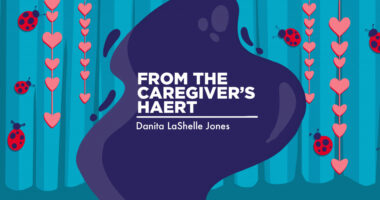Patients Wary of Having Children, but Open to Reproductive Assistance

More than one-third of people with hereditary angioedema (HAE) hesitate to have children of their own — often due to fears of passing on the chronic genetic disease — according to data from a small survey.
“Our study showed that HAE has a clear impact on reproductive decision-making,” the researchers wrote.
A fraction of patients were willing to know more about reproductive assistance techniques, including preimplantation genetic testing (PGT) — in which an embryo used in in vitro fertilization (IVF) is examined for abnormalities before transfer to a woman’s uterus. Many patients, however, had “low familiarity with PGT” and with other options for reproductive assistance.
These findings, therefore, highlight the importance of genetic counseling and discussion of reproductive assistance with HAE patients, the researchers said.
The study, “Patient perspectives on reproductive options for hereditary angioedema: a cross-sectional survey study,” was published in The Journal of Allergy and Clinical Immunology: In Practice.
HAE is a rare genetic disorder caused by mutations that lower the production or lead to the creation of a dysfunctional C1 inhibitor (C1-INH) protein. This causes recurrent and potentially life-threatening episodes of severe swelling and pain.
The disease is inherited in an autosomal dominant pattern, meaning that a single copy of the mutated gene — inherited from either biological parent — is sufficient for offspring to develop HAE. This represents a 50% chance of the disease being inherited by the child.
The risk of passing on HAE to a child is a major cause of anxiety among potential parents with HAE, research has shown.
However, reports on patients’ views on — and knowledge of — reproductive choices are limited. To learn more, a team led by researchers at the Amsterdam UMC, in the Netherlands, conducted a survey among HAE patients followed at their center between December 2020 and April 2021.
“We achieved a response rate of 88% of the vast majority of 91 people suffering from HAE in the Netherlands,” the team wrote.
Participants were asked to fill in a Brief Illness Perception Questionnaire (BIPQ), which included the risk of having a child with HAE. Scores ranged from one to five, with scores of three or lower indicating a “low perceived risk,” and those of four or higher reflecting a “high perceived risk.”
All respondents who had or were considering having a child — defined as those with a “child wish” — were asked how their HAE diagnosis impacted their past and future reproductive decisions.
In total, of 91 participants, 83 completed the full questionnaire and five did it partially.
Results showed the majority of participants (79%) were aware their children would have a 50% chance of inheriting the mutation that causes HAE, with 32% of them considering it a high risk.
Three-quarters of respondents with a child wish (60 of 80, or 75%) were diagnosed with HAE before their first pregnancy, and 38% of them said they hesitated to have children due to HAE.
Among 76 respondents, 16 (21%) said that HAE changed their reproductive intentions. The disease had no impact on the reproductive decisions of the remaining 60 patients.
Significant differences between these two patient groups included the practice of a religion, the perceived risk of having a child with HAE, and the total BIPQ-score. Patients who replied that HAE impacted their reproductive choices had a higher BIPQ-score — indicative of a more negative perception of HAE — than those who did not.
Of the 80 respondents with a child wish, 30 (38%) were familiar with prenatal diagnosis, called PND, before completing the survey, and 27 (34%) had knowledge of PGT.
In PGT, used during IVF procedures, an embryo can be tested for a range of genetic mutations, including HAE, prior to being implanted into a woman’s uterus for further development. As part of IVF, a woman’s egg and a man’s sperm are joined together in a lab dish to create an embryo.
Most patients had a positive opinion of both PND (67%) and PGT (65%). Six patients had undergone PND or PGT in the past; another 17 reported that they opted not to have PND because they wouldn’t terminate a pregnancy due to HAE.
Importantly, however, according to researchers, 32 of 76 respondents (42%) said they did not consider PGT because it was not brought up as an option. In 17 cases (22%) the procedure was deemed to be impossible, and in eight cases (11%), HAE was diagnosed following conception.
One respondent refrained from PGT due to ethical reasons and another for believing the test had insufficient reliability. In women with HAE, hormonal therapy to boost ovulation increased the risk of HAE attacks — a reason cited by almost half (45%) who opted not to undergo PGT.
Overall, the findings from this small survey show that “over one third of hereditary angioedema patients are hesitant to have children because of their condition,” the researchers wrote.
While not all of them were willing to resort to reproductive assistance methods like PGT, “the willingness to consider these options and the low rate of current knowledge of all available options underline the importance of genetic counseling of HAE patients,” the team wrote.
The researchers concluded that reproductive counseling would “improve patients’ empowerment and [contribute] to better informed decision making.”






